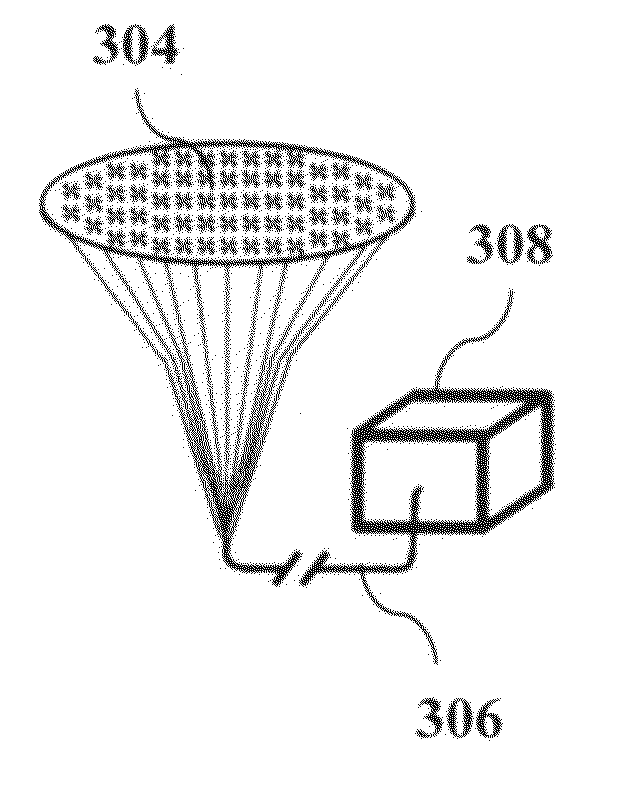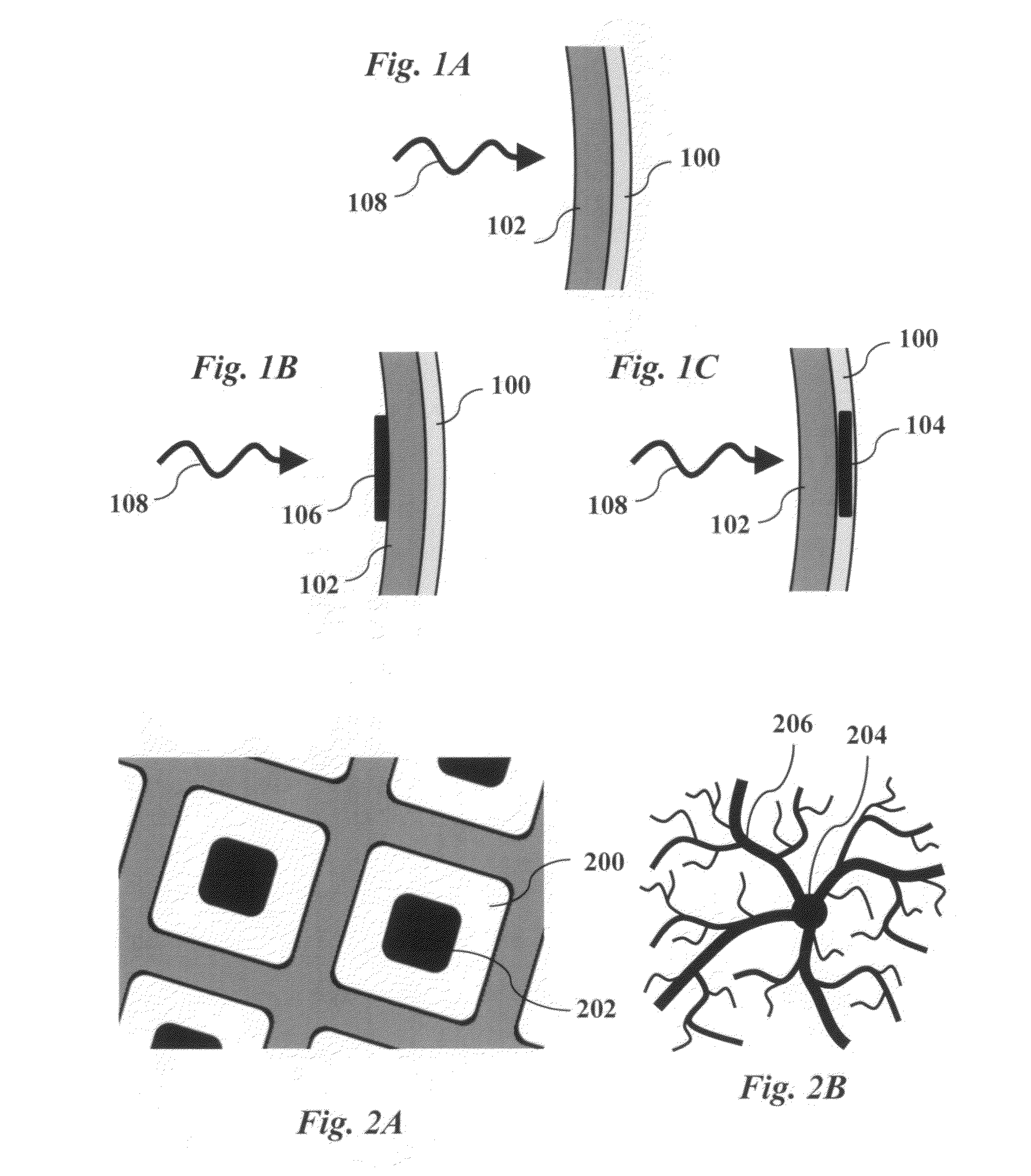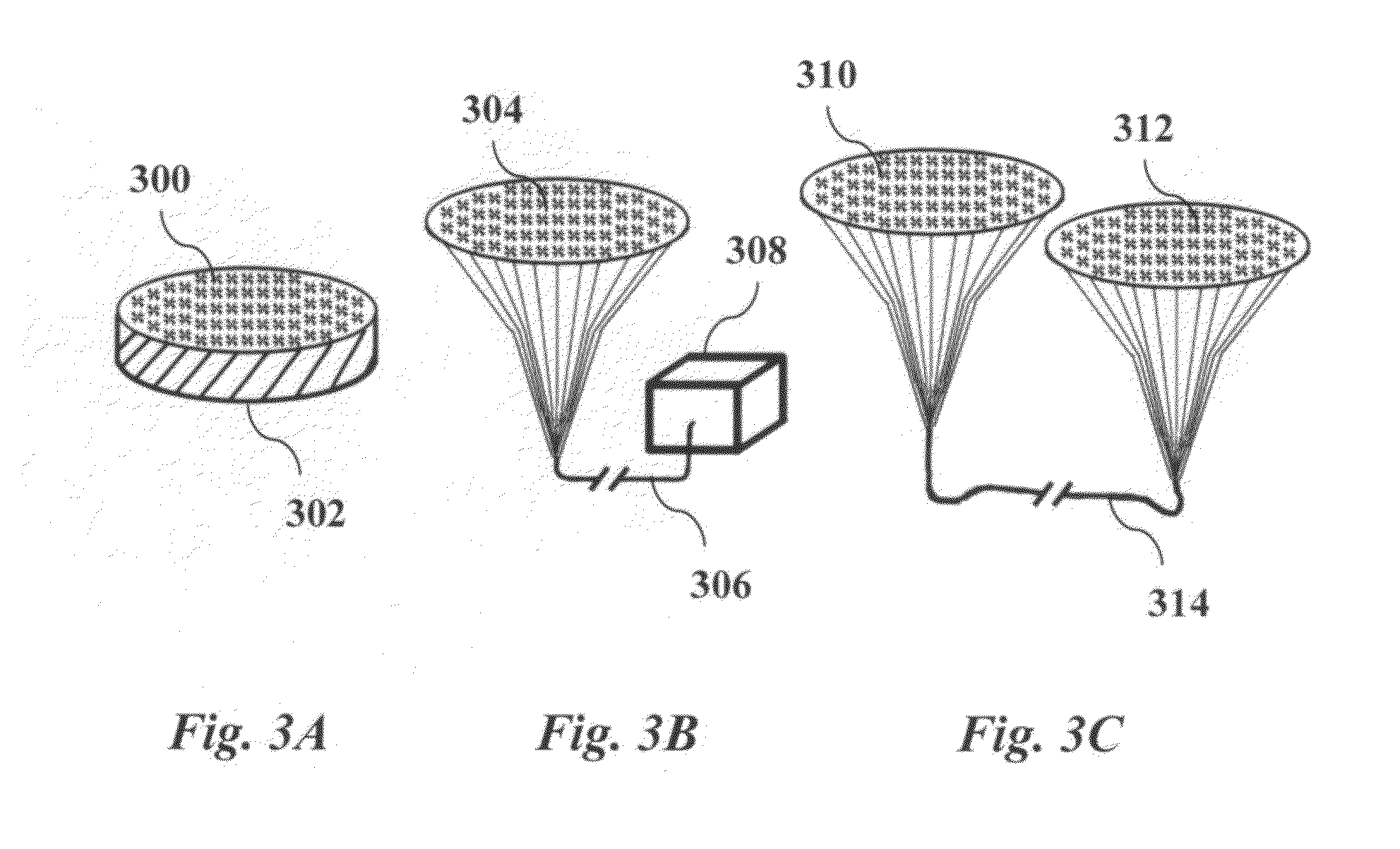Fractal interconnects for neuro-electronic interfaces and implants using same
a neuro-electronic interface and fractal technology, applied in the field of artificial electronic implants, can solve the problems of electrical signals from the electrodes affecting the plexiform layer, not solving other problems with the design, and many potential problems
- Summary
- Abstract
- Description
- Claims
- Application Information
AI Technical Summary
Benefits of technology
Problems solved by technology
Method used
Image
Examples
Embodiment Construction
[0037]Embodiments of the present invention include a method for fabricating fractal interconnects to improve the neuro-electronic interface between biological organisms and artificial electronic implants such as artificial retinal implants, artificial brain implants and artificially-generated neuron systems. Embodiments also include neuro-electronic interconnect devices and the implant devices incorporating them. Such fractal interconnect devices provide a neuro-electronic interface between the electrodes of an implant and the neurons of a human or animal. The principles of the present invention have general application to many types of electronic implants and other devices that rely upon neuro-electrical interfaces.
[0038]FIG. 3A is a schematic diagram showing one embodiment of the invention in the form of an implant having an array of fractal interconnects 300 integrated with an electronic chip 302. For example, this type of device may be a retinal implant in the form of a 3 mm sub...
PUM
 Login to View More
Login to View More Abstract
Description
Claims
Application Information
 Login to View More
Login to View More - R&D
- Intellectual Property
- Life Sciences
- Materials
- Tech Scout
- Unparalleled Data Quality
- Higher Quality Content
- 60% Fewer Hallucinations
Browse by: Latest US Patents, China's latest patents, Technical Efficacy Thesaurus, Application Domain, Technology Topic, Popular Technical Reports.
© 2025 PatSnap. All rights reserved.Legal|Privacy policy|Modern Slavery Act Transparency Statement|Sitemap|About US| Contact US: help@patsnap.com



